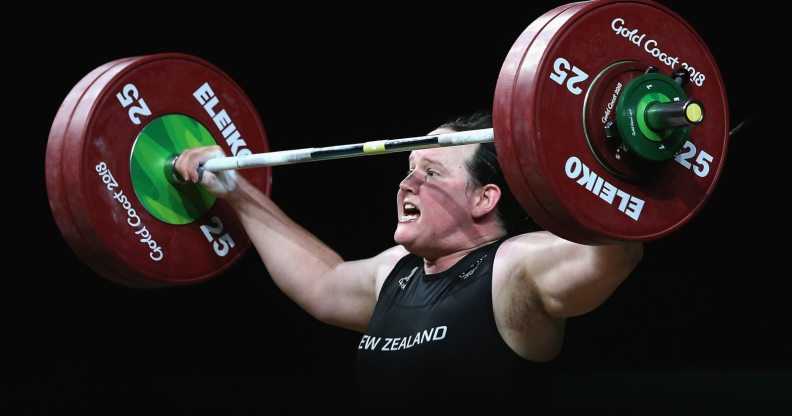New rules on hormones might make it even harder for trans athletes to compete in the Olympics

Hubbard just before her horrifying injury (Alex Pantling/Getty)
Hubbard just before her horrifying injury (Alex Pantling/Getty)
New rules regarding the testosterone levels of transgender women competing in the Olympics are set to be announced amid an ongoing debate about trans athletes.
The International Olympic Committee (IOC), the main body responsible for overseeing the Olympic games, is expected to announce new rules that would halve half the amount of testosterone permitted in female athletes.
The level of testosterone allowed will go down from 10 to five nanomoles per litre of blood in preparation for the 2020 Olympic Games in Toyko.
These rules are set to apply to 55 different Olympic sports including archery and wrestling, and may further impact transgender athletes’ ability to compete at the highest levels.

Archery is one of the 55 sports expected to be regulated under the new rules. (Photo by Buda Mendes/Getty Images)
The International Association of Athletics Federations (IAAF) is also expected to announce new restrictions on the testosterone levels of female athletes in running events, according to The Sunday Times.
Related: Transgender footballer given permission to play in women’s league
The testosterone restriction is expected to be applied to international women’s races at 400m, 800m and 1500m distances.
Openly transgender athletes have been allowed to compete in the Olympics since 2004, with the requirements that they had undergone gender confirmation surgery and had been on hormone therapy for two years.
These rules were relaxed in 2015, removing the requirement of gender confirmation surgery and lowering the required time on hormone therapy from two years to one.

(Getty)
Openly trans athletes in professional sport have caused a considerable debate regarding any potential advantage trans athletes may have over their cisgender competitors.
Joanna Harper, a trans long-distance runner who has previously consulted with the IOC on trans athletes told the Sunday Times: “In high levels of sport, transgender women are substantially underrepresented.
“That indicates that whatever physical advantages transgender women have — and they certainly exist — they are not nearly as large as the sociological disadvantages.”
Harper also said that while trans athletes may have a physical advantage, the same could be said for many athletes who are naturally taller or stronger.

(Getty)
Writing for The Washington Post in 2015, Harper said: “All successful athletes have advantages over less-successful athletes — just ask anyone who has had to guard LeBron James.
“The question is whether trans women can compete equitably against other women. And in many sports, the evidence supports an emphatic yes.”
Levels of testosterone can differ between cisgender women, with many cisgender and intersex women experiencing higher levels of the hormone than their trans counterparts.
South African distance runner Caster Semenya was famously subject to multiple “gender tests” after media controversy over her “abnormally” high testosterone level for a female athlete.

Caster Semenya at the 2016 Olympics (Photo by ADRIAN DENNIS/AFP/Getty Images)
Semenya fought a long battle to compete at the highest level, and took part in the Olympics after the International Association of Athletics Federations’ regulations on the issue were overturned.
It is now unclear whether Semenya will be allowed to continue to compete under the expected changes.
Last year the Australian Weightlifting Federation attempted to ban trans weightlifter Laurel Hubbard due to fears that she would have an unfair advantage.

Laurel Hubbard (Photo by Hannah Peters/Getty Images)
However, this attempt was denied by the Commonwealth Games Federation, who proved that Hubbard’s testosterone levels met already strict criteria – and her last tests indicated that she has less testosterone than a cis female.
“Laurel has met all the requirements they’ve asked which includes a monthly testosterone test and her testosterone levels are lower than a normal female,” Olympic Weightlifting New Zealand president Garry Marshall said.
On April 8, organisers of the Boston Marathon confirmed that transgender women would be eligible to compete, following other famous marathons including the Chicago, New York City and London marathons.
“We take people at their word. We register people as they specify themselves to be,” said Tom Grilk, chief of the Boston Athletic Association.

